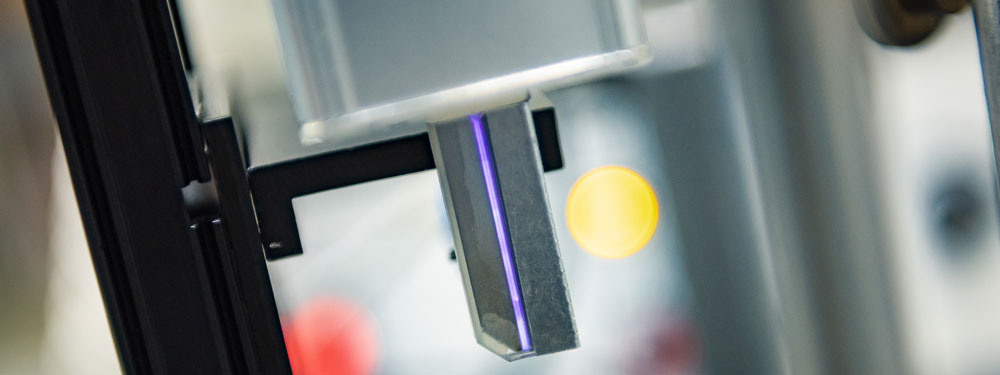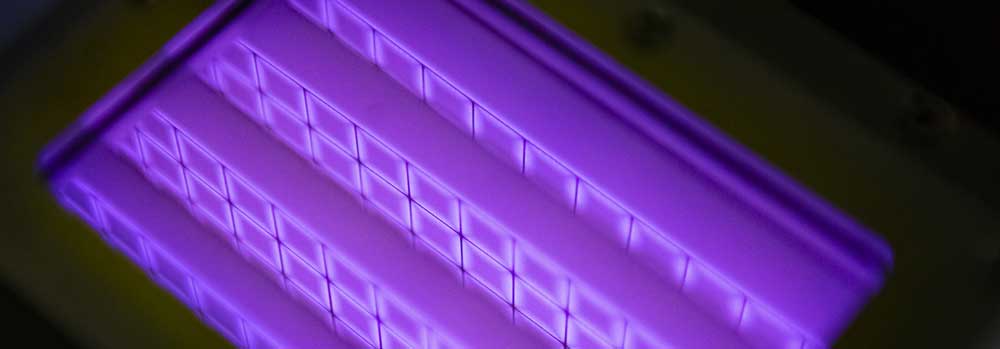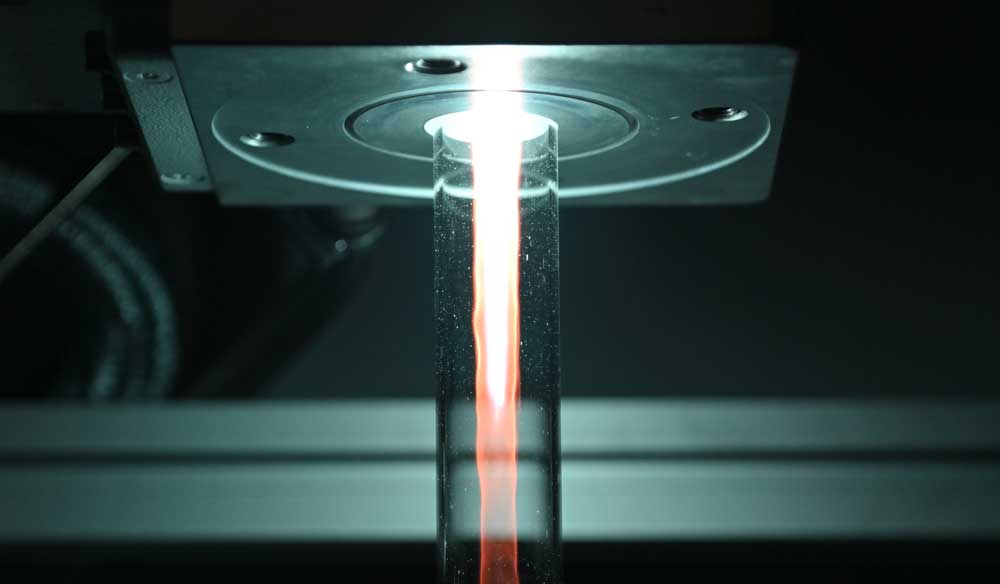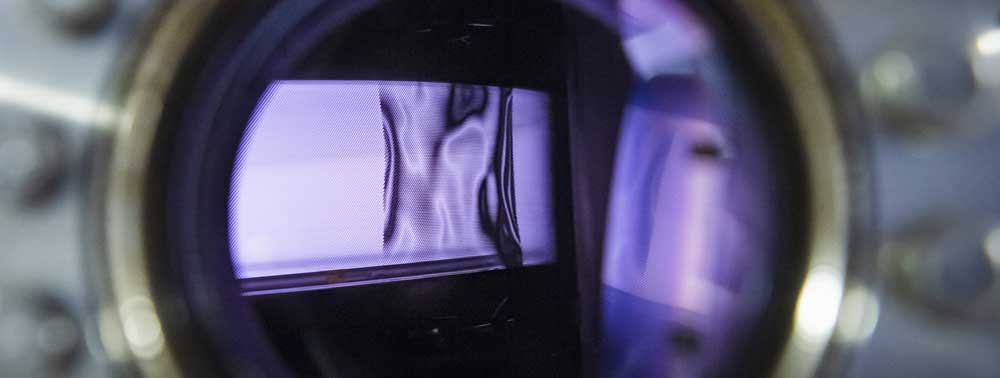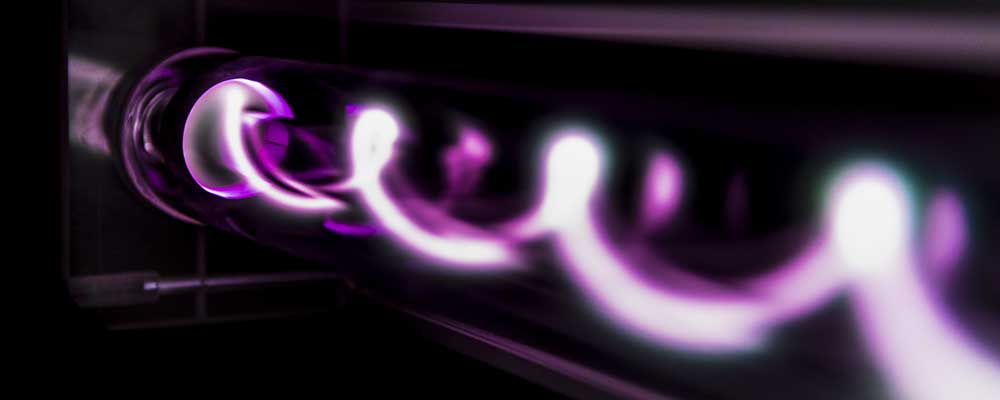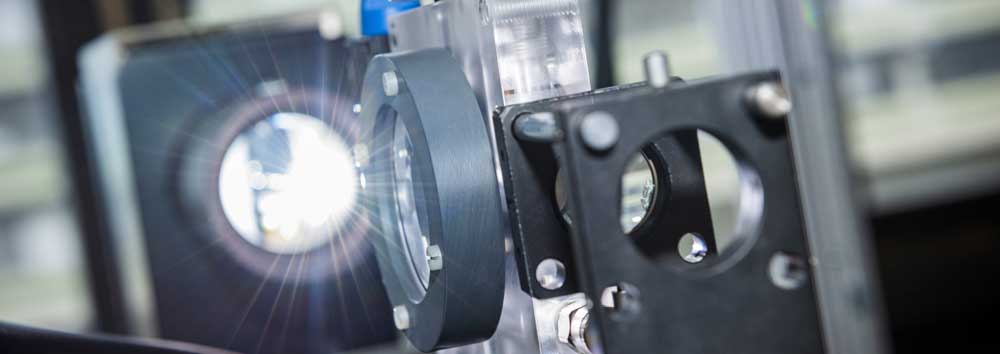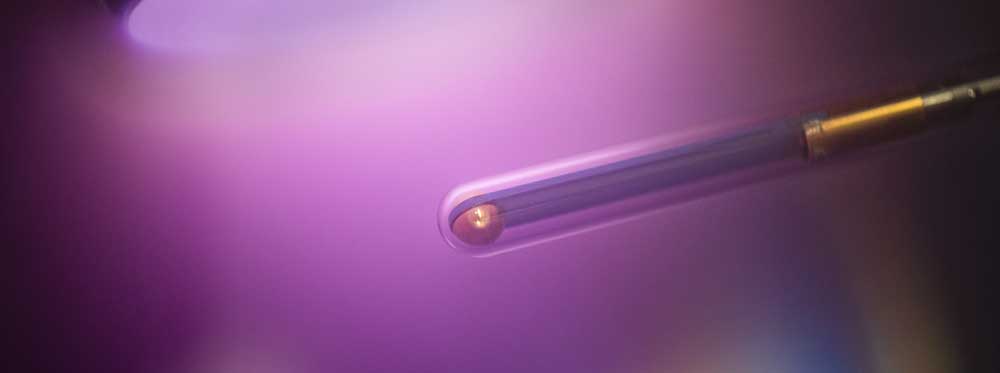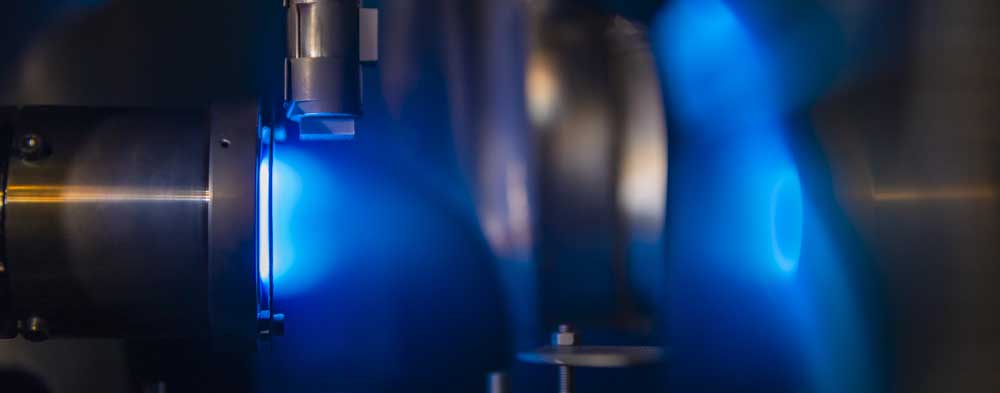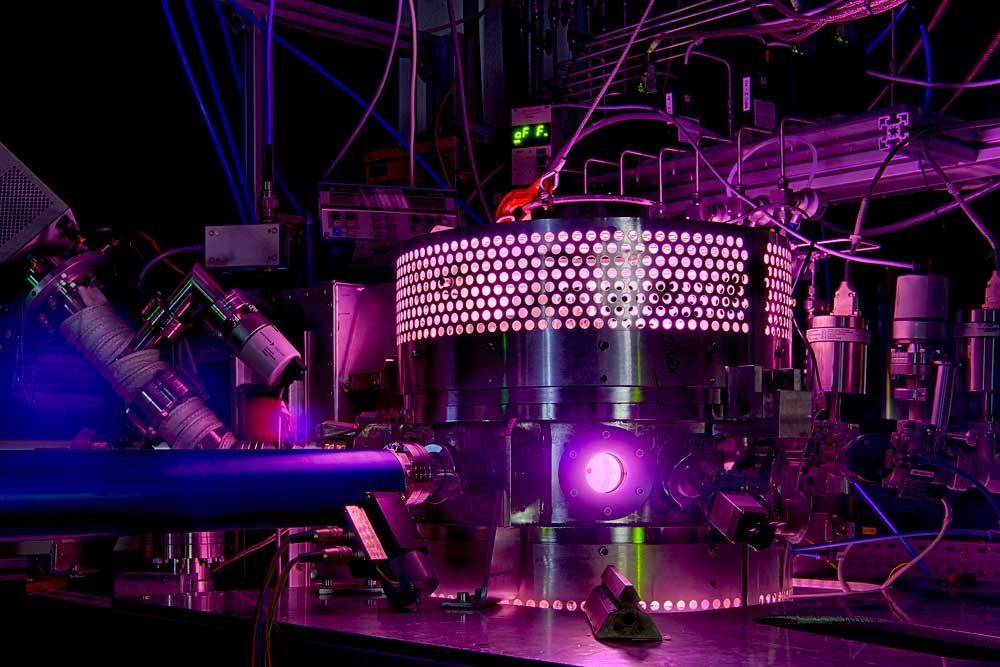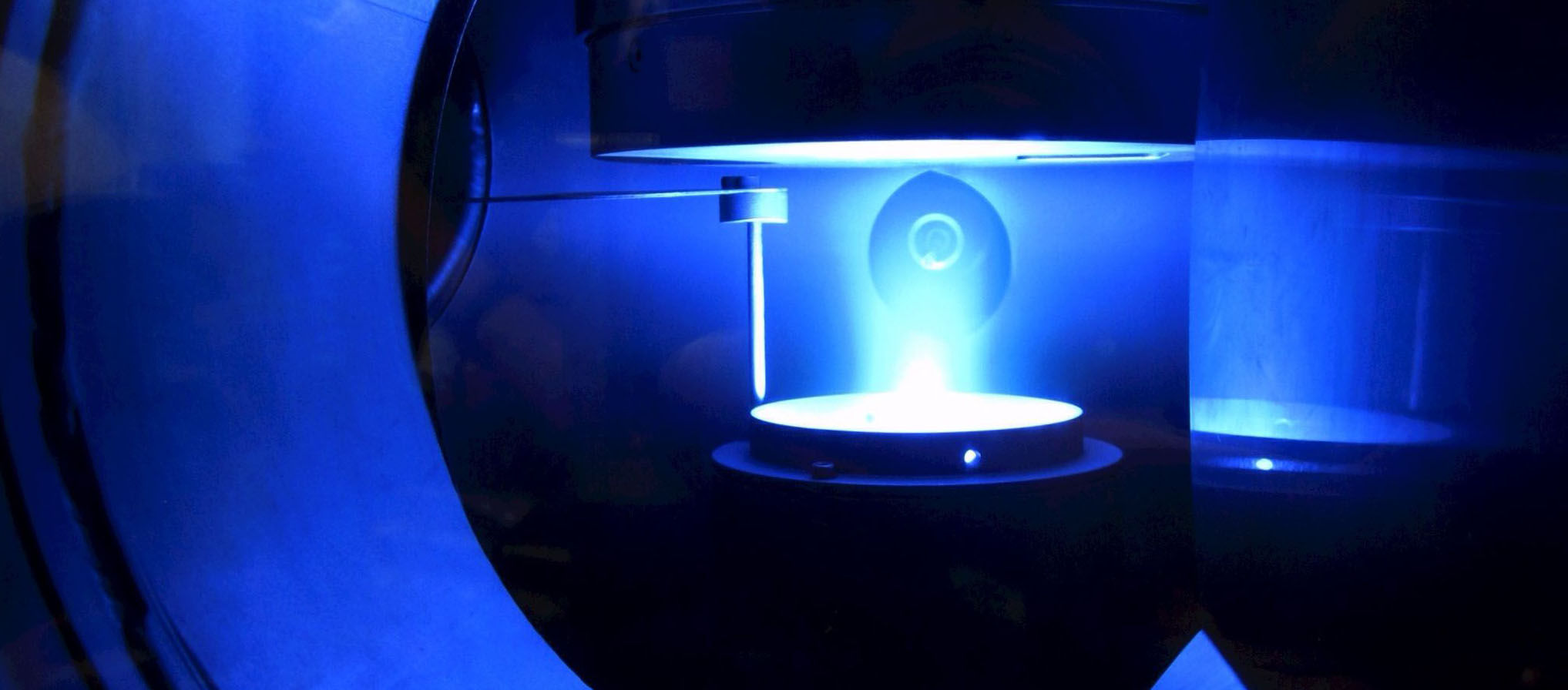- Details
Awards
Martin Muhler receives Alwin Mittasch Award 2023
Prof. Dr. Martin Muhler was awarded the Alwin Mittasch Prize 2023 for his "fundamental contributions to the cross-scale understanding of the mode of action of cat- alyst materials in chemical reactions for future-oriented technologies".
This award is given to researchers for outstanding achievements in the field of catalyst research by the German Society for Catalysis. The award was handed over in Weimar on March 16, 2023.
Prof. Dr. Martin Muhler holds the Chair of Technical Chemistry at Ruhr-Universität and is vice spokesperson of CRC 1316, PI in project A7 "Plasma catalysis for con- version of volatile organic compounds (VOC)", as well as a member of the MGK.
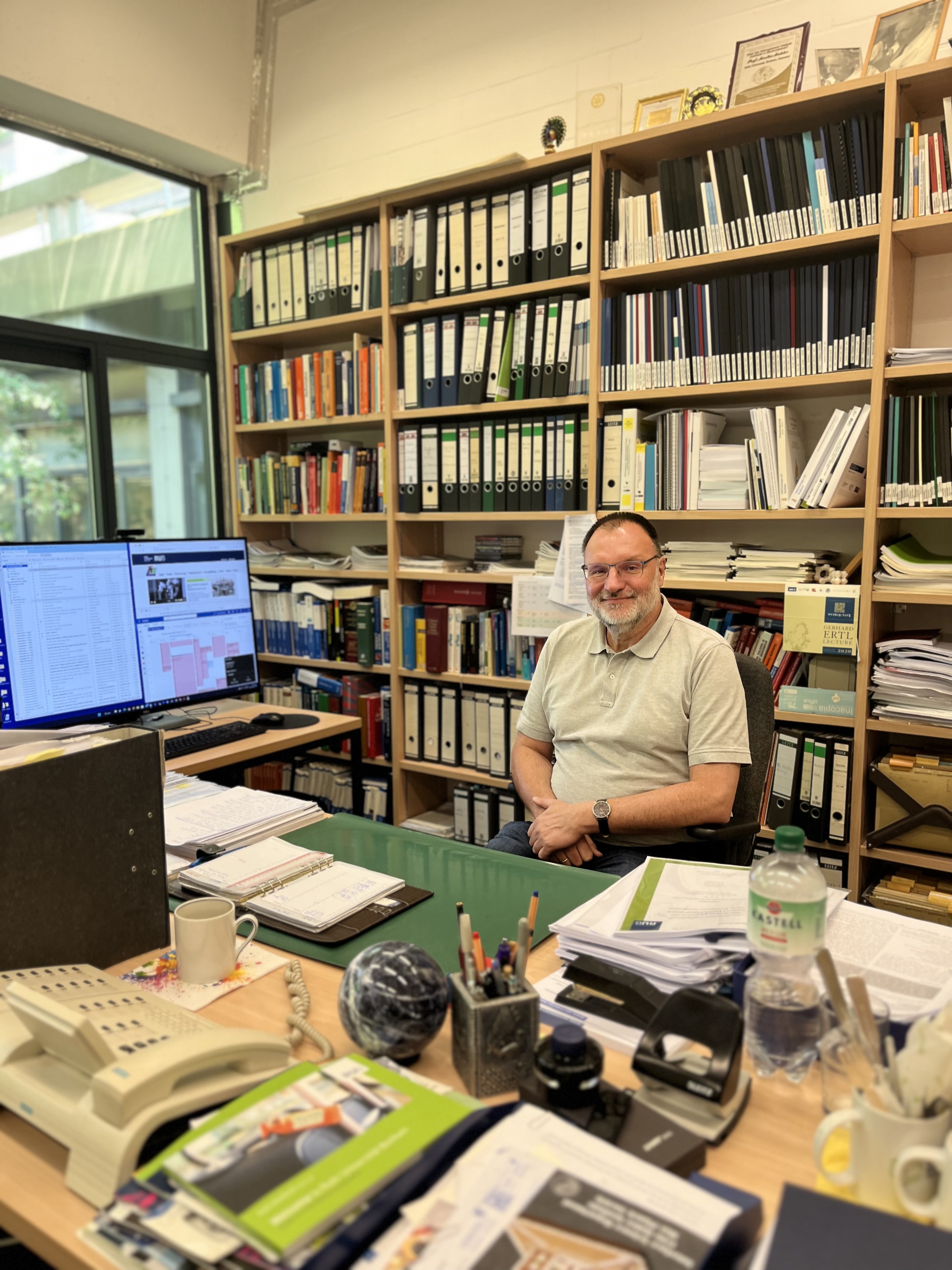
- Details
Exchange
Continuous exchange between Bochum and GREMI laboratory
The DAAD exchange program (part of a PROCOPE project) between Prof. Judith Golda from Ruhr University Bochum and Prof. Claire Douat from GREMI allowed several exchange visits between both groups. The exchange focuses on the study of the role of CO in the treatment of biological substrates.
Cold atmospheric pressure plasmas could provide a well-controlled local source of small-dose CO that can be directly guided to the treatment zone. The aim of the project is to investigate the production pathways and the role of the CO molecule during the plasma treatment of biological material. Possible synergism of CO and plasma-produced species such as electric fields, ions and electrons, photons and other neutral radicals are analysed.
In detail, several exchange visits from both labs were made. In July, Jun.-Prof. Judith Golda, Dr. Laura Chauvet and Daniel Henze from the CRC 1316 we- re guests in the laboratory of Prof. Claire Douat at the GREMI in Orléans. In a joint measurement campaign, two different atmospheric pressure plasma jets we- re being tested. They measured the production of CO at different operating conditions with a gas analyser.
In October, directly after the Plasma School in Bad Honneff, Eloise Mestre visited the PIP group. The second measurement campaign focused on the measurement of plasma-produced CO in an kHz jet source using mass spectrometry.
Finally, Jun.-Prof. Judith Golda and Dr. Sebastian Bur- henn stayed in the laboratory of Prof. Claire Douat at the GREMI in Orléans for a joint research campaign in November again. This time, the work was focused on the measurement of plasma-produced carbon monoxide affecting human hemoglobin.
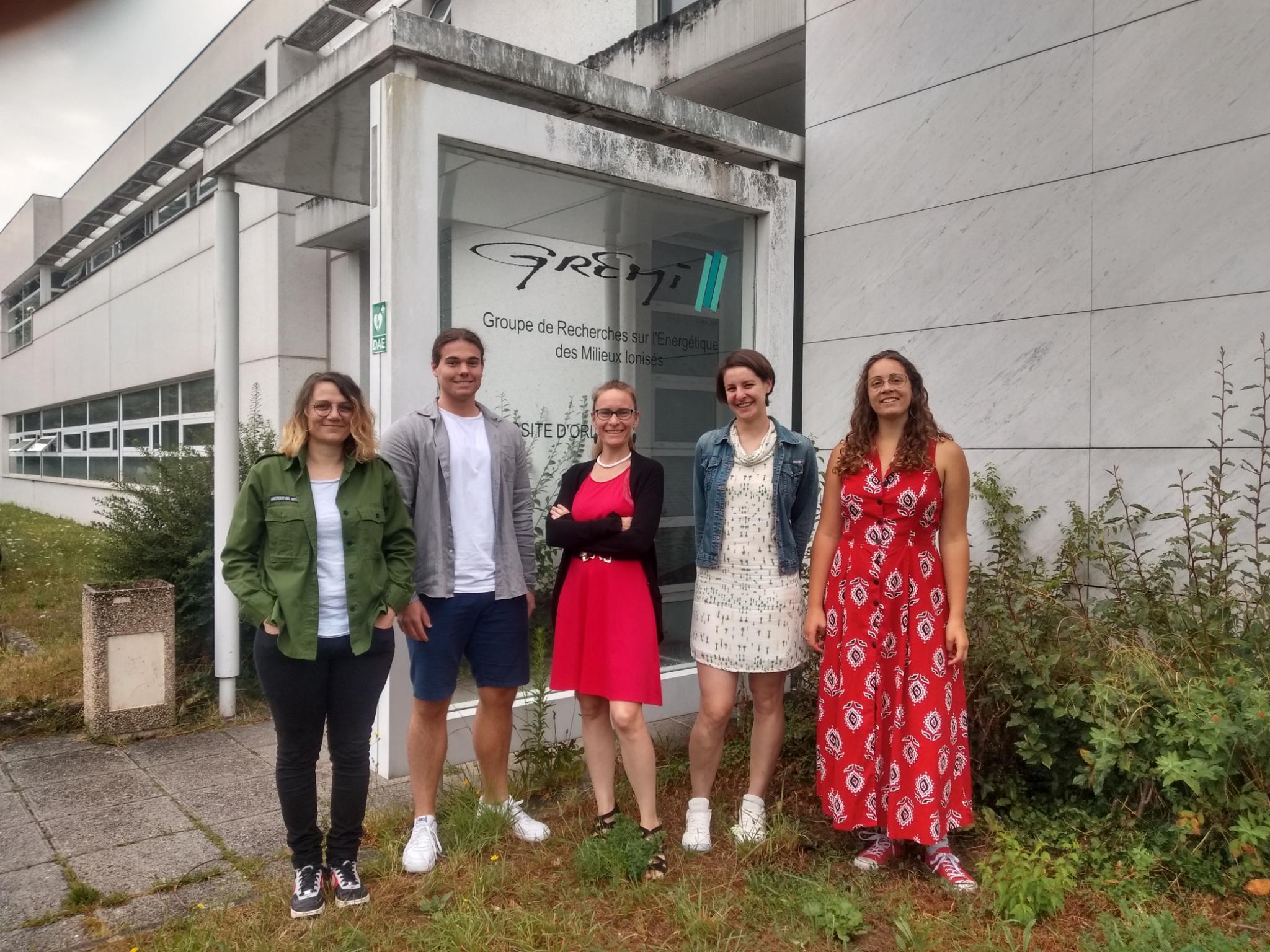
- Details
Outreach
New concept was introduced in the plasma workshop of the project week
The project week for students at Ruhr University Bochum in grade 8 and 9 is a educational offer of the CRC 1316, Faculty of Physics and Astronomy from RUB and is greatly supported by zdi. From 4th to 7th October, the project week took place with four workshops hosting over 60 high school students.
The concept of the plasma workshop “From plasma to gold coating” was adapted according to feedback from students and workshop leaders from the last years. The focus of the topics was shifted from theoretical work towards application-based discussions with exercises to practice and apply newly gained knowledge. The focus has been set to enable the students to plan and execute their research as well as analyse the data and present their findings creatively and self-determined. The workshop leaders and material should guide through the workshop, offering the students a democratic say in the concrete design of the week.
To adapt the material to modern standards and the vast digital resources available for students online, the project guide now includes online resources that can be used for better understanding or diving deeper into different topics by using the QR codes to access articles and videos. In the future, this guide can also be used with and on tablets and as a digital version, enhancing the interactivity and individualisation of the learning process of the students even further.
- Details
25th International Plasma School
From 01 October to 6 October the Plasma School took place again in Bad Honnef. In the 25th edition, 69 students from 13 countries were able to expand their knowledge of plasma physics and plasma technology at the Physics Center. Subsequently, the Master Class started on October 7, this year on the topic of electric propulsion.
The local organization of the plasma school by the Research Department was supported this year by the international chairmen Jan Benedikt and Holger Kersten from CAU Kiel.
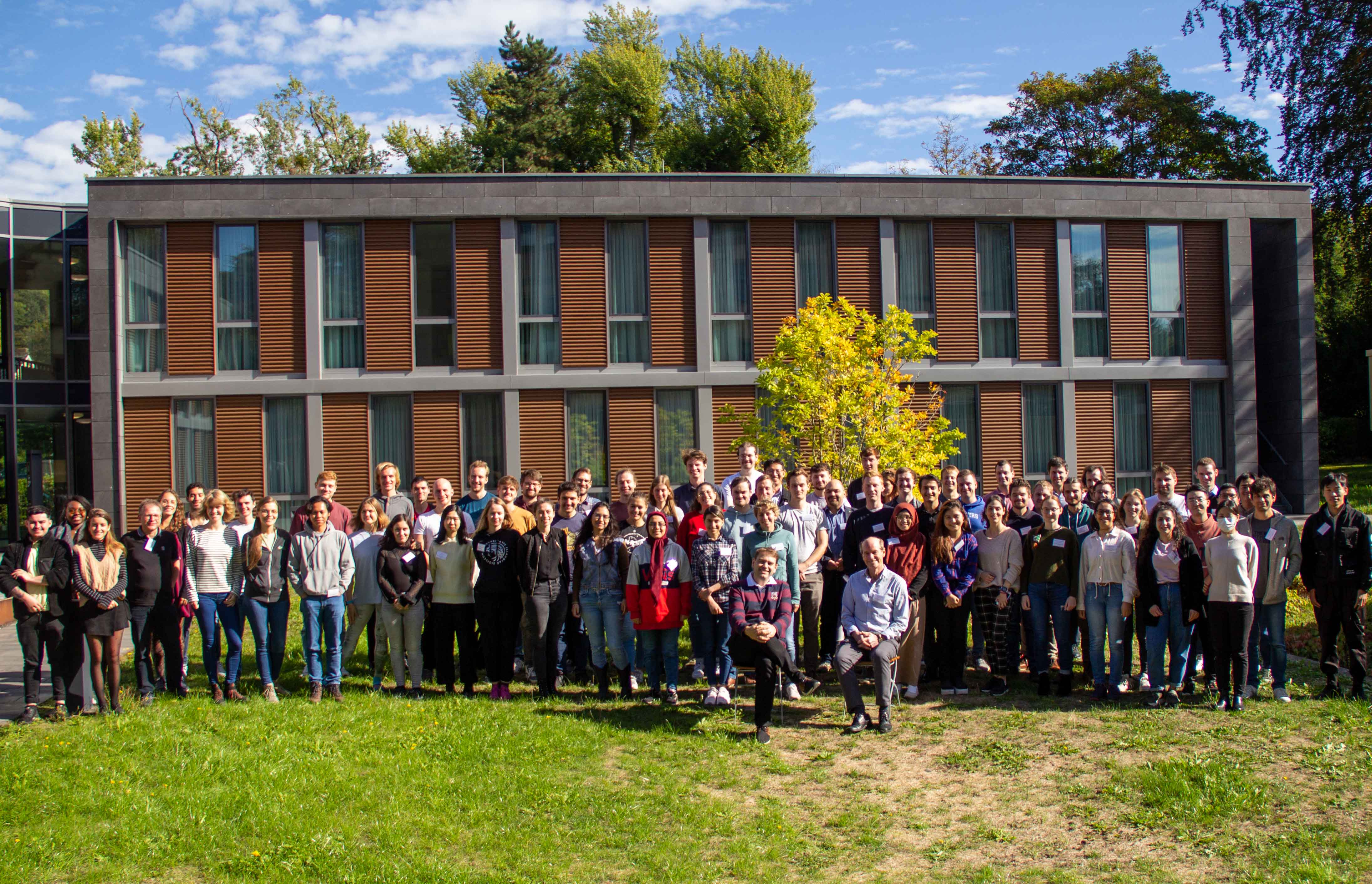
- Details
Exchange
Exchange with the Institute of Plasma Physics of the Czech Academy
From October 17th—19th, Pia Pottkämper and Dr. Katharina Laake from project B7 (CRC 1316) visited the Institute of Plasma Physics of the Czech Academy (IPP) of Sciences as part of an exchange visit. The motivation for this exchange was the similar research topic of both groups. Previously from October 12th—13th Dr. Petr Bílek from that same Institute had visited the EP2 chair to give a talk on the recent results of his groups investigations of nanosecond pulsed plasmas in water. At the IPP they were invited to visit the labs and experiments. They had the chance to discuss and compare their research of nanosecond pulsed plasmas in liquids. According to that topic, Katharina Laake gave a talk regarding the “Temporal evolution of nanosecond pulsed plasmas in water” at the Institute. During their stay, they also had the chance to explore the city of Prague with their hosts.

- Details
Conference
Dr. Laura Chauvet at Plasma Catalysis Meeting
Dr. Laura Chauvet from Project A3 of CRC 1316 received the poster award for the best poster for her contribution "Mass spectrometric measurements of the plasma catalytic conversion of n-butane at atmospheric pressure". In addition to Dr. Chauvet, three other colleagues from the physics and chemistry departments of CRC1316 participated in the International Symposium on Plasmas for Catalysis and Energy Materials, held in Liverpool, UK, in July 2022.
- Details
Conference
CRC 1316 at the International Conference on Plasma Medicine
In the summer, Dr. Sebastian Burhenn and Steffen Schüttler, together with Sabrina Klopsch and Tim Dirks from the RUB Applied Microbiology group, visited the 9th International Conference on Plasma Medicine (ICPM9) in Utrecht, the Netherlands. Around 250 participants discussed the current state of plasmas in medicine. Topics ranged from "Plasma Agricultural Applications" to "Plasma-Liquid Interactions" to "Plasma-Based Decontamination and Sterilisation" and much more.
Sebastian Burhenn gave a presentation in the section "Fundamentals of Atmospheric Plasma" on the "Influence of Humidity on OH Distribution in the COST Jet measured by Laser-Induced Fluorescence". Steffen Schüttler contributed to the section "Plasma-Liquid Interactions" with his talk on "Hydrogen peroxide production in water treated with a capillary plasma jet". Sabrina Klopsch and Tim Dirks presented a poster about their work in the field of plasma-driven biocatalysis.
- Details
Conference
Gordon Research Conference with Contributions from Bochum
From July 23rd to July 29th, the Gordon Research Conference and Seminar on Plasma Processing and Science (GRC) was held in Andover, New Hampshire. The conference focused on plasmas and their interactions with matter, while the seminar focused on investigating multiphase and multiscale plasma-material interactions.
Prof. Dr. Judith Golda from CRC 1316 gave a talk on "State enhanced actinometry in atmospheric pressure discharges". She also organized the Gordon Research Seminar together with Marien Simeni. Moreover, Judith Golda organized the so-called "Power Hour" at the GRC - an event to raise awareness about discrimination against underrepresented groups in plasma physics.
Rahel Buschhaus from project C7 of the SFB-TR 87 presented her paper on "Ion-induced secondary electron emission from metal surfaces analyzed in beam experiments" during the research seminar. She had one of the top two presentations in the research seminar and was honoured to give her talk again at the research conference to a large audience. In addition, Judith Golda, Simon Kreuznacht, and Rahel Buschhaus gave poster presentations.
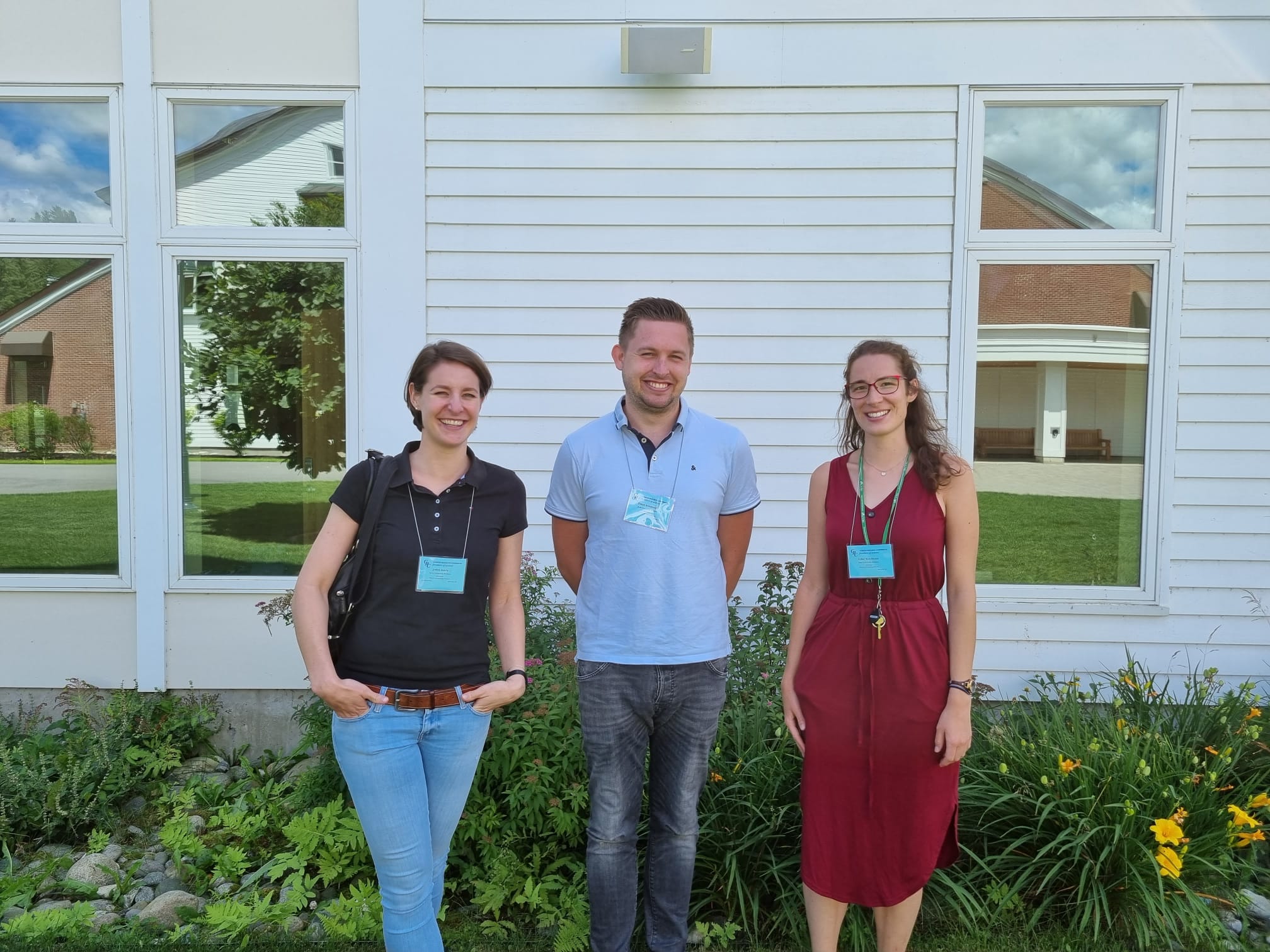
- Details
Meeting
Summit meeting of the SFB-TR 87
In order to bring the findings of the last twelve years to a round conclusion, a summit meeting was organized by Peter Awakowicz, the spokesperson of the SFB- TR 87. This took place from May 15 to May 18 in the conference center at the Eibsee. Moreover, the Mercator Fellows, Prof. Dr Ludvik Martinu, Prof. Dr Christian Mitterer, as well as the guests, Prof. Dr André Anders and Hon.-Prof. Dr. Christian Oehr were included in the program. Their lectures were the highlights of the lecture series.
Furthermore, the most important results of the individual research areas were presented in lectures. In addition, junior researchers were asked to give comprehensive presentations in groups. The fruitful discussion within the research-oriented sessions, as well as over a cup of coffee, was a great success of this event.
In the end, the presentation on new research questions by Peter Awakowicz could motivate future research fields very nicely. Peter Awakowicz is credited for his communicative way of bringing together different researchers over twelve years and leading them to high-class results. In addition, many young researchers have been trained during this time and have been very well supported in the consortium.

- Details
Exchange Research Data Management UA Ruhr & Oulu
Under the slogan "Mining of research data instead of coal" the UA Ruhr organized an international knowledge exchange on data management with researchers working as data stewards at the University of Oulu, Finland on 11th and 12th May. The event was host- ed in the convention center of Ruhr University Bochum and by zoom.
The local structures supporting research data management at the UA Ruhr universities were presented and experiences on advice, training and data management plans, and discuss best practices were shared.
Furthermore, an exchange between the CRCs CRC 1280 and CRC 1316 as well as the partners from UA-Ruhr and the Finnish guests took place. Here researchers and da- ta stewards as well as data experts from the consortia were brought together.
The event was a great success, as the structures on both sides differ, but the challenges of the individual actors in the field of data management are identical. Thus, many interesting experiences could be exchanged. Due to the success, a return visit to Oulu is now being planned to continue the exchange.
- Details
Girl's day 2022
On April 28th, the annual Girls’ Day took place. Offering a 5-hour hands-on workshop on plasma physics, female students could dive into university physics as well as learn more about science, studying and career options pursuing studies in physics. During the workshop, the school students first got to know the basics of plasma – what does it consist of, how can we influence its behav- iour and which characteristics does it have. Following this rather theoretical part, the school students worked on the sputter coater, making samples to analyse with a
profilometer and identify the thickness of the surface coating from the sputtering process. The aim of the Girls’ Day is to offer female school students an insight into technical and scientific careers and motivate more school students to choose a degree in a MINT-subject. We also aim at reducing prejudices and fears towards a physics degree.

